- Home
- Stephen Hawking
Brief Answers to the Big Questions Page 3
Brief Answers to the Big Questions Read online
Page 3
When we returned from Caltech in 1975, I initially felt rather low. Everything seemed so parochial and restricted in Britain compared to the can-do attitude in America. At the time, the landscape was littered with dead trees killed by Dutch elm disease and the country was beset by strikes. However, my mood lifted as I saw success in my work and was elected, in 1979, to the Lucasian Professorship of Mathematics, a post once held by Sir Isaac Newton and Paul Dirac.
During the 1970s, I had been working mainly on black holes, but my interest in cosmology was renewed by the suggestions that the early universe had gone through a period of rapid inflationary expansion in which its size grew at an ever-increasing rate, like the way prices have increased since the UK’s Brexit vote. I also spent time working with Jim Hartle, formulating a theory of the universe’s birth that we called “no boundary.”
By the early 1980s, my health continued to worsen, and I endured prolonged choking fits because my larynx was weakening and was letting food into my lungs as I ate. In 1985, I caught pneumonia on a trip to CERN, the European Organisation for Nuclear Research, in Switzerland. This was a life-altering moment. I was rushed to the Lucerne Cantonal Hospital and put on to a ventilator. The doctors suggested to Jane that things had progressed to the stage where nothing could be done and that they turn off my ventilator to end my life. But Jane refused and had me flown back to Addenbrooke’s Hospital in Cambridge by air ambulance.
As you may imagine this was a very difficult time, but thankfully the doctors at Addenbrooke’s tried hard to get me back to how I had been before the visit to Switzerland. However, because my larynx was still allowing food and saliva into my lungs, they had to perform a tracheostomy. As most of you will know, a tracheostomy takes away the ability to speak. Your voice is very important. If it is slurred, as mine was, people can think you are mentally deficient and treat you accordingly. Before the tracheostomy my speech was so indistinct that only people who knew me well could understand me. My children were among the few who could do so. For a while after the tracheostomy, the only way I could communicate was to spell out words, letter by letter, by raising my eyebrows when someone pointed to the right letter on a spelling card.
Luckily a computer expert in California named Walt Woltosz heard of my difficulties. He sent me a computer program he had written called Equalizer. This allowed me to select whole words from a series of menus on the computer screen on my wheelchair by pressing a switch in my hand. Over the years since then, the system has developed. Today I use a program called Acat, developed by Intel, which I control by a small sensor in my glasses via my cheek movements. It has a mobile phone, which gives me access to the internet. I can claim to be the most connected person in the world. I have kept the original speech synthesiser I had, however, partly because I haven’t heard one with better phrasing, and partly because by now I identify with this voice, despite its American accent.
I first had the idea of writing a popular book about the universe in 1982, around the time of my no-boundary work. I thought I might make a modest amount to help support my children at school and meet the rising costs of my care, but the main reason was that I wanted to explain how far I felt we had come in our understanding of the universe: how we might be near finding a complete theory that would describe the universe and everything in it. Not only is it important to ask questions and find the answers, as a scientist I felt obligated to communicate with the world what we were learning.
Appropriately enough, A Brief History of Time was first published on April Fool’s Day in 1988. Indeed, the book was originally meant to be called From the Big Bang to Black Holes: A Short History of Time. The title was shortened and changed to “brief,” and the rest is history.
I never expected A Brief History of Time to do as well as it has. Undoubtedly, the human-interest story of how I have managed to be a theoretical physicist and a bestselling author despite my disabilities has helped. Not everyone may have finished it or understood everything they read, but they at least grappled with one of the big questions of our existence and got the idea that we live in a universe governed by rational laws that, through science, we can discover and understand.
To my colleagues, I’m just another physicist, but to the wider public I became possibly the best-known scientist in the world. This is partly because scientists, apart from Einstein, are not widely known rock stars, and partly because I fit the stereotype of a disabled genius. I can’t disguise myself with a wig and dark glasses—the wheelchair gives me away. Being well known and easily recognisable has its pluses and minuses, but the minuses are more than outweighed by the pluses. People seem genuinely pleased to see me. I even had my biggest-ever audience when I opened the Paralympic Games in London in 2012.
•
I have led an extraordinary life on this planet, while at the same time travelling across the universe by using my mind and the laws of physics. I have been to the furthest reaches of our galaxy, travelled into a black hole and gone back to the beginning of time. On Earth, I have experienced highs and lows, turbulence and peace, success and suffering. I have been rich and poor, I have been able-bodied and disabled. I have been praised and criticised, but never ignored. I have been enormously privileged, through my work, in being able to contribute to our understanding of the universe. But it would be an empty universe indeed if it were not for the people I love, and who love me. Without them, the wonder of it all would be lost on me.
And at the end of all this, the fact that we humans, who are ourselves mere collections of fundamental particles of nature, have been able to come to an understanding of the laws governing us, and our universe, is a great triumph. I want to share my excitement about these big questions and my enthusiasm about this quest.
One day, I hope we will know the answers to all these questions. But there are other challenges, other big questions on the planet which must be answered, and these will also need a new generation who are interested and engaged, and have an understanding of science. How will we feed an ever-growing population? Provide clean water, generate renewable energy, prevent and cure disease and slow down global climate change? I hope that science and technology will provide the answers to these questions, but it will take people, human beings with knowledge and understanding, to implement these solutions. Let us fight for every woman and every man to have the opportunity to live healthy, secure lives, full of opportunity and love. We are all time travellers, journeying together into the future. But let us work together to make that future a place we want to visit.
Be brave, be curious, be determined, overcome the odds. It can be done.
What was your dream when you were a child, and did it come true?
I wanted to be a great scientist. However, I wasn’t a very good student when I was at school, and was rarely more than halfway up my class. My work was untidy, and my handwriting not very good. But I had good friends at school. And we talked about everything and, specifically, the origin of the universe. This is where my dream began, and I am very fortunate that it has come true.
1
IS THERE A GOD?
Science is increasingly answering questions that used to be the province of religion. Religion was an early attempt to answer the questions we all ask: why are we here, where did we come from? Long ago, the answer was almost always the same: gods made everything. The world was a scary place, so even people as tough as the Vikings believed in supernatural beings to make sense of natural phenomena like lightning, storms or eclipses. Nowadays, science provides better and more consistent answers, but people will always cling to religion, because it gives comfort, and they do not trust or understand science.
A few years ago, The Times newspaper ran a headline on the front page which said “Hawking: God did Not Create Universe.” The article was illustrated. God was shown in a drawing by Michelangelo, looking thunderous. They printed a photo of me, looking smug. They made it look like a duel between us. But I don’t have a grudge against God. I do not wan
t to give the impression that my work is about proving or disproving the existence of God. My work is about finding a rational framework to understand the universe around us.
For centuries, it was believed that disabled people like me were living under a curse that was inflicted by God. Well, I suppose it’s possible that I’ve upset someone up there, but I prefer to think that everything can be explained another way, by the laws of nature. If you believe in science, like I do, you believe that there are certain laws that are always obeyed. If you like, you can say the laws are the work of God, but that is more a definition of God than a proof of his existence. In about 300 BCE, a philosopher called Aristarchus was fascinated by eclipses, especially eclipses of the Moon. He was brave enough to question whether they really were caused by gods. Aristarchus was a true scientific pioneer. He studied the heavens carefully and reached a bold conclusion: he realised the eclipse was really the shadow of the Earth passing over the Moon, and not a divine event. Liberated by this discovery, he was able to work out what was really going on above his head, and draw diagrams that showed the true relationship of the Sun, the Earth and the Moon. From there he reached even more remarkable conclusions. He deduced that the Earth was not the centre of the universe, as everyone had thought, but that it instead orbits the Sun. In fact, understanding this arrangement explains all eclipses. When the Moon casts its shadow on the Earth, that’s a solar eclipse. And when the Earth shades the Moon, that’s a lunar eclipse. But Aristarchus took it even further. He suggested that stars were not chinks in the floor of heaven, as his contemporaries believed, but that stars were other suns, like ours, only a very long way away. What a stunning realisation it must have been. The universe is a machine governed by principles or laws—laws that can be understood by the human mind.
I believe that the discovery of these laws has been humankind’s greatest achievement, for it’s these laws of nature—as we now call them—that will tell us whether we need a god to explain the universe at all. The laws of nature are a description of how things actually work in the past, present and future. In tennis, the ball always goes exactly where they say it will. And there are many other laws at work here too. They govern everything that is going on, from how the energy of the shot is produced in the players’ muscles to the speed at which the grass grows beneath their feet. But what’s really important is that these physical laws, as well as being unchangeable, are universal. They apply not just to the flight of a ball, but to the motion of a planet, and everything else in the universe. Unlike laws made by humans, the laws of nature cannot be broken—that’s why they are so powerful and, when seen from a religious standpoint, controversial too.
If you accept, as I do, that the laws of nature are fixed, then it doesn’t take long to ask: what role is there for God? This is a big part of the contradiction between science and religion, and although my views have made headlines, it is actually an ancient conflict. One could define God as the embodiment of the laws of nature. However, this is not what most people would think of as God. They mean a human-like being, with whom one can have a personal relationship. When you look at the vast size of the universe, and how insignificant and accidental human life is in it, that seems most implausible.
I use the word “God” in an impersonal sense, like Einstein did, for the laws of nature, so knowing the mind of God is knowing the laws of nature. My prediction is that we will know the mind of God by the end of this century.
The one remaining area that religion can now lay claim to is the origin of the universe, but even here science is making progress and should soon provide a definitive answer to how the universe began. I published a book that asked if God created the universe, and that caused something of a stir. People got upset that a scientist should have anything to say on the matter of religion. I have no desire to tell anyone what to believe, but for me asking if God exists is a valid question for science. After all, it is hard to think of a more important, or fundamental, mystery than what, or who, created and controls the universe.
I think the universe was spontaneously created out of nothing, according to the laws of science. The basic assumption of science is scientific determinism. The laws of science determine the evolution of the universe, given its state at one time. These laws may, or may not, have been decreed by God, but he cannot intervene to break the laws, or they would not be laws. That leaves God with the freedom to choose the initial state of the universe, but even here it seems there may be laws. So God would have no freedom at all.
Despite the complexity and variety of the universe, it turns out that to make one you need just three ingredients. Let’s imagine that we could list them in some kind of cosmic cookbook. So what are the three ingredients we need to cook up a universe? The first is matter—stuff that has mass. Matter is all around us, in the ground beneath our feet and out in space. Dust, rock, ice, liquids. Vast clouds of gas, massive spirals of stars, each containing billions of suns, stretching away for incredible distances.
The second thing you need is energy. Even if you’ve never thought about it, we all know what energy is. Something we encounter every day. Look up at the Sun and you can feel it on your face: energy produced by a star ninety-three million miles away. Energy permeates the universe, driving the processes that keep it a dynamic, endlessly changing place.
So we have matter and we have energy. The third thing we need to build a universe is space. Lots of space. You can call the universe many things—awesome, beautiful, violent—but one thing you can’t call it is cramped. Wherever we look we see space, more space and even more space. Stretching in all directions. It’s enough to make your head spin. So where could all this matter, energy and space come from? We had no idea until the twentieth century.
The answer came from the insights of one man, probably the most remarkable scientist who has ever lived. His name was Albert Einstein. Sadly I never got to meet him, since I was only thirteen when he died. Einstein realised something quite extraordinary: that two of the main ingredients needed to make a universe—mass and energy—are basically the same thing, two sides of the same coin if you like. His famous equation E = mc2 simply means that mass can be thought of as a kind of energy, and vice versa. So instead of three ingredients, we can now say that the universe has just two: energy and space. So where did all this energy and space come from? The answer was found after decades of work by scientists: space and energy were spontaneously invented in an event we now call the Big Bang.
At the moment of the Big Bang, an entire universe came into existence, and with it space. It all inflated, just like a balloon being blown up. So where did all this energy and space come from? How does an entire universe full of energy, the awesome vastness of space and everything in it, simply appear out of nothing?
For some, this is where God comes back into the picture. It was God who created the energy and space. The Big Bang was the moment of creation. But science tells a different story. At the risk of getting myself into trouble, I think we can understand much more the natural phenomena that terrified the Vikings. We can even go beyond the beautiful symmetry of energy and matter discovered by Einstein. We can use the laws of nature to address the very origins of the universe, and discover if the existence of God is the only way to explain it.
As I was growing up in England after the Second World War, it was a time of austerity. We were told that you never get something for nothing. But now, after a lifetime of work, I think that actually you can get a whole universe for free.
The great mystery at the heart of the Big Bang is to explain how an entire, fantastically enormous universe of space and energy can materialise out of nothing. The secret lies in one of the strangest facts about our cosmos. The laws of physics demand the existence of something called “negative energy.”
To help you get your head around this weird but crucial concept, let me draw on a simple analogy. Imagine a man wants to build a hill on a flat piece of land. The hill will represent the universe. To make
this hill he digs a hole in the ground and uses that soil to dig his hill. But of course he’s not just making a hill—he’s also making a hole, in effect a negative version of the hill. The stuff that was in the hole has now become the hill, so it all perfectly balances out. This is the principle behind what happened at the beginning of the universe.
When the Big Bang produced a massive amount of positive energy, it simultaneously produced the same amount of negative energy. In this way, the positive and the negative add up to zero, always. It’s another law of nature.
So where is all this negative energy today? It’s in the third ingredient in our cosmic cookbook: it’s in space. This may sound odd, but according to the laws of nature concerning gravity and motion—laws that are among the oldest in science—space itself is a vast store of negative energy. Enough to ensure that everything adds up to zero.
I’ll admit that, unless mathematics is your thing, this is hard to grasp, but it’s true. The endless web of billions upon billions of galaxies, each pulling on each other by the force of gravity, acts like a giant storage device. The universe is like an enormous battery storing negative energy. The positive side of things—the mass and energy we see today—is like the hill. The corresponding hole, or negative side of things, is spread throughout space.

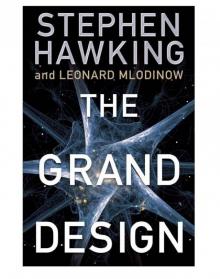 The Grand Design
The Grand Design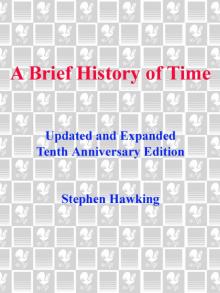 A Brief History of Time
A Brief History of Time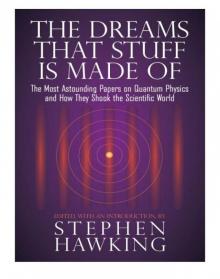 The Dreams That Stuff is Made of
The Dreams That Stuff is Made of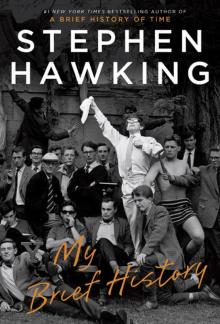 My Brief History
My Brief History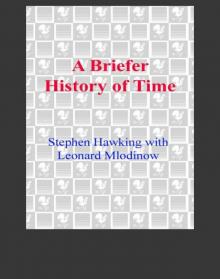 A Briefer History of Time
A Briefer History of Time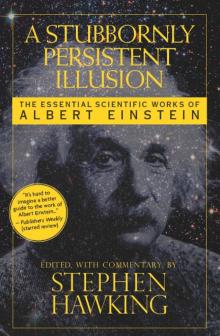 A Stubbornly Persistent Illusion
A Stubbornly Persistent Illusion George and the Blue Moon
George and the Blue Moon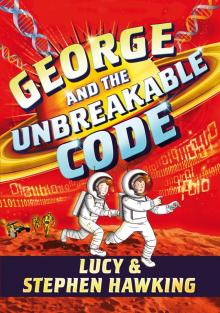 George and the Unbreakable Code
George and the Unbreakable Code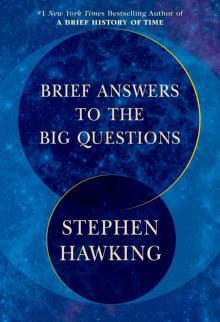 Brief Answers to the Big Questions
Brief Answers to the Big Questions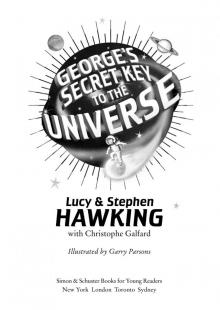 George's Secret Key to the Universe
George's Secret Key to the Universe